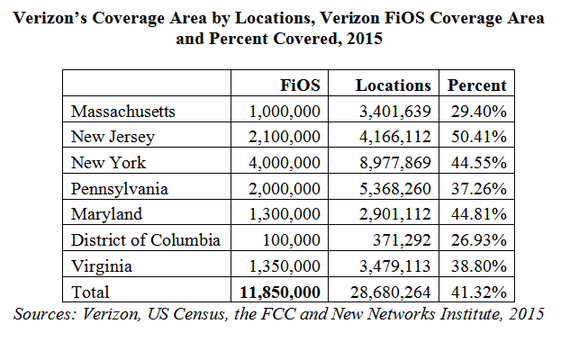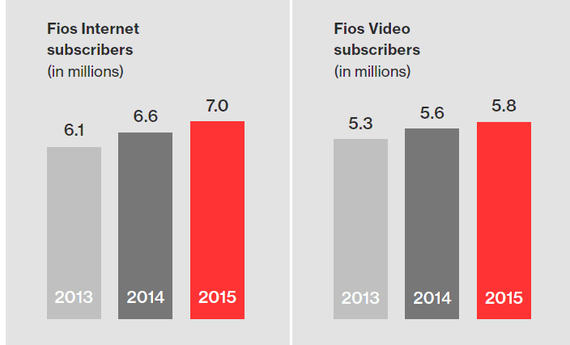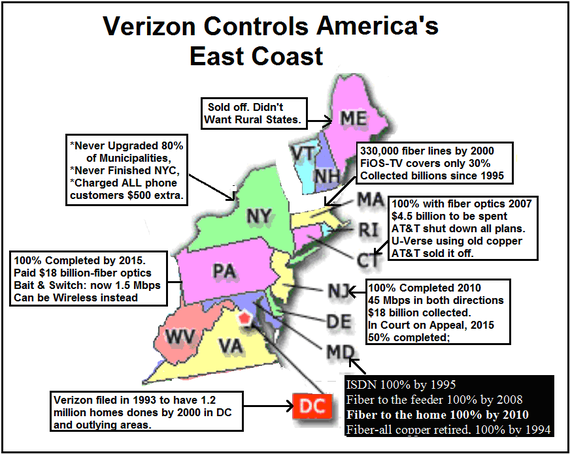The Signs of Captivity:
- America is 55th in the world in 4G LTE speeds and falling behind, according to Open Signal.
- "Data overage charges crushing cellphone customers", CNN writes
- "Study Finds Special Access Market Concentration Cost Consumers & U.S. Economy150 Billion Since 2010", Consumer Federation of America
- "Cable TV Subscribers Still Unhappy"... Very unhappy, according to Consumer Reports
- The advertised89.99 Time Warner Cable Triple Play is deceptive and F@#X!?--now 126% above the advertised price, (July 2016) Huffington Post
- "Verizon confirms plans to raise prices by up to10 per month", BGR News
- "Pennsylvania Investigating State of Verizon's Landline Service", Consumerist
- "CWA Petitions Maryland Public Service Commission to Investigate Verizon Service Quality", CWA
- "FCC Lays out its Big 5G Push", Engadget, (Shame 5G doesn't exist yet.)
See a pattern? 'Maximize profits and deliver less service' might come to mind. Or another way to say it is - 'Screw the customer in as many ways as possible', would be close. Maybe -'this is a failure of the regulators to actually fix what's broken', would seem logical.
For the most part, everything in the above list is about the control of America's critical infrastructure--the telecommunications wires. Who has high-speed, who doesn't, who has real choice vs faux competition--or who is being shut off or not maintained or...
And while there are some in the back shouting - But it's all wireless... Sorry, the three main companies--AT&T, Verizon and CenturyLink, that control most of the wires also control all wireless--as cell sites, hot spots, etc. all end up connecting to a wire. (CenturyLink has a deal with Verizon.) Even the over hyped "5G", which does not exist and may never exist as advertised or that reach most of America, is a 'fiber-to-the-antenna' service - i.e., a fiber optic wire that has lots of small cell antennas attached.
There are also the cable wires, and through mergers, Comcast and Time Warner Cable-Charter, are part of just a few companies controlling America's phone, broadband, Internet, cable, and wireless communications.
And, at this point, this is all one, big, happy family comprised of a few companies that are not seriously competing and are not allowing/making it easy to compete to use primary critical infrastructure.
A Few Twists & Turns are in Play
First, there has been a shift over the last five+ years. In 2010, Verizon changed management to have former Verizon Wireless CEO, Low McAdam, take over - and become a 'mobile-first' company. AT&T is also following suit. In its 2015 annual report AT&T proclaims that it is "mobilizing your world".
In fact, AT&T and Verizon discussed the plans for shutting off customers and moving them to wireless in their statements over the last five+ years. In 2013, AT&T claimed it was planning to deploy 4G LTE in 25% of their rural areas.
"In the 25 percent of AT&T's wireline customer locations where it's currently not economically feasible to build a competitive IP wireline network, the company said it will utilize its expanding 4G LTE wireless network -- as it becomes available -- to offer voice and high-speed IP Internet services."
So the current plans that have been in the works for a while are to 'shut off the wires' in large parts of the US and force-march customers onto wireless. And it is now being carried out--and this is cause for concern.
This wireless plan, however, is different; it is to replace the fiber-to-the-home plan, but, ironically, as you will read, it is to put more fiber optics in the neighborhood for small cell antennas--I'll get to this in a second.
'Special Access': The Guts of the Networks.
Like I said, wireless is controlled by the wires - and a new focus has been emerging to deal with the guts of the networks, known as 'special access', (renamed 'Broadband Data Services'). These are copper or fiber optic wires that are used by the companies or competitors to offer wireless, or for end user business lines, from ATM machines to alarm services.
Think of them as--the phone companies have been able to get control of the roads as well as control of the gas--and they can then ration it, sell 'hi-test' or 'sludge', or charge what they want.
The recent Consumer Federation of America study showed that these services were costing consumers and the U.S. economy $150 billion since 2010--about $75 billion in overcharging over the last 5 years, and a total of $150 billion that includes economic harms caused by the excesses.
Going back to the opening bullets, the control over these networks means that the overages on cell service, the ability of Verizon to just 'raise its rates', and even the speed of 4G, are all tied to special access--and overcharging.
Special Access Wires are Just Part of the State Utility Wires.
One thing most people don't understand is that these are identical to wires used for telephone service, and they are part of the state utilities, and most of America's wireless and business services are controlled now by essentially these three companies, AT&T, Verizon and Centurylink, who don't compete seriously for wireline services--and have the monopoly share of the wires in their territories. And the true irony is that most of these territories were separate companies when the original Ma Bell, AT&T, was broken up in 1984. Like a bad joke, Humpty Dumpty returned.

Thus, besides 'shutting off the wires' and doing a force-march of customers onto their wireless--their plan is to also keep the guts of the networks for themselves to use for their own wireless services.
And it is the details of what's happening with Verizon in Boston that shows we are at the end game.
Boston, the New Battleground.
Verizon announced that it was going to spend $300 million in Boston on a FiOS TV deployment over the next five years. Verizon had been asked multiple times to come to Boston before, and the telco just shrugged.
And when Verizon agreed, most have reported that Verizon's Boston roll out was to be FiOS fiber-to-the-home, (FiOS is based on fiber optic wires). Verizon management also stated that it was going to wait to deploy any more fiber-to-the-home anywhere else until it had done some work in this city.
This means Verizon has stopped deploying fiber optic services throughout its entire territory--that's the entire US East Coast--from Massachusetts to Virginia, and has no plans of finishing Baltimore or Albany, Buffalo or Alexandria.
But there was a darker story. It appears that this was more of a plan to build out the fiber wires, paid for by the wireline utility, but to have them be used for wireless 4G and 5G- and this would replace the wires to the home and the copper wires.
And there are plenty of reasons - subplots, to do this. Verizon saves money doing wireless vs putting in the wires. Verizon gets to block all of the competitors who are not allowed to use the 'new fiber build outs'; it harms the companies that depend on the existing copper wires, such as the alarm industry, not to mention all of the new competitors who are planning on doing DAS 5G deployments--which requires fiber optic wires. And it harms the unions - as Verizon Wireless is NOT a union shop and the antennas, etc. will be done by contractors.
To the customer, this means that Verizon will have the control of the wireless service and could charge by the gig like it does for its current wireless products. It also could mean less speed, as no 5G services exist today, except in isolated tests, and 4G, which was supposed to be 100Mbps--never made it; America is 55th in the world in 4G. And competitors can't use these new wires so there could be no one else coming to town.
And these wireless services require that fiber optics are installed. AT&T's U-Verse is a copper-to-the home service so it can't simply offer 5G, if it ever shows--and few, if any, companies will plan to extend the fiber needed to rural areas.
Alongside this, Verizon will 'shut off the copper', which it claims is losing money. But it is not discussing their controls over the 'special access' wires; i.e., the fiber being put in, which is mainly not for 'fiber to-the-home', but 'fiber to the antenna'--is classified as 'special access'.
As we detailed recently, the Verizon NY 2015 Annual Report clearly shows that there are massive cross-subsidies afoot between and among the special access services and the state phone networks, and that the networks are profitable once these cross-subs were eliminated.
This plan also leaves the rest of Massachusetts not completed and since the plan appears to be to wait until the wireless 'test' is deployed to see how it goes-- this means that the rest of the East Coast is being held hostage.
Scorecard: What's Really Been Deployed.
Regardless of the hype, last year we collected the data about the larger Verizon states, including using Verizon's own press releases. This next chart supplies the basic info. "FIOS", supplies the number of 'homes and businesses' who can supposedly get FiOS, while the "Locations" were created from the US Census, and cross-referenced with the FCC's data on the telcos.
Verizon has only 41% coverage of FiOS and this is the 'high' number. As found by the City of New York's audit of Verizon's NYC franchise agreement to have 100% completed by July 2015, Verizon never finished the build and left major holes in deployment.
Instead, as listed in the front list of bullets, there are investigations about the condition and maintenance of the networks in Maryland, Pennsylvania and other states.
I note: Verizon's 2015 annual report shows that Verizon appears to not care about the wired deployments. Verizon FiOS TV had only 5.8 million customers at the end of 2015, and over a three year period added about ½ million. Add an additional million+ for Internet only - then look back at the chart above for 'locations' covered, and we do not have a pretty picture.
Thus, Verizon never showed up to offer serious cable competition, much less serious broadband competition to the majority of customers in their territories.
This is not to let the cable companies off the hook. But, we all know that competition requires that there are two or more companies offering a 'better deal'. Verizon's packages have not only almost identical pricing for services, but they include all of the made up fees and questionable charges that Time Warner Cable has implemented... i.e., the industry is now one, big happy family.
The String of Broken Promises
Unfortunately, there is a long history of making 'promises' to deploy fiber optics - and none were ever fulfilled. Every state had an 'alterative regulation' plan where changes were made to the state regulations that gave the companies more money to build out their fiber optic networks - and this started a decade before FiOS.
For details see "The Book of Broken Promises", now on sale as a cheap PDF.
I can hear the questions and statements now:
- What about the Internet and Net Neutrality?
- Aren't the set top boxes going to solve this?
- Isn't AT&T rolling out fiber optic networks now?
- What about Google fiber and muni buildouts?
- I love my IPhone.
- Isn't the FCC going to fix special access in their current proceeding?
- What are you proposing to fix this mess?
I'll return to these topics in future articles.



